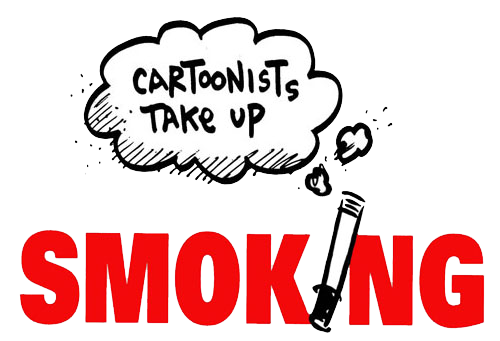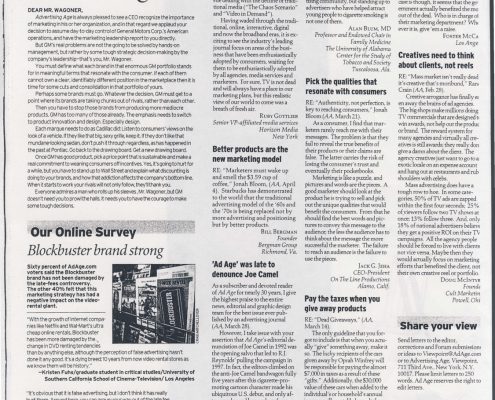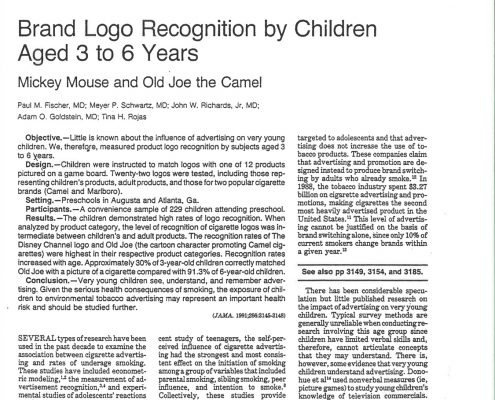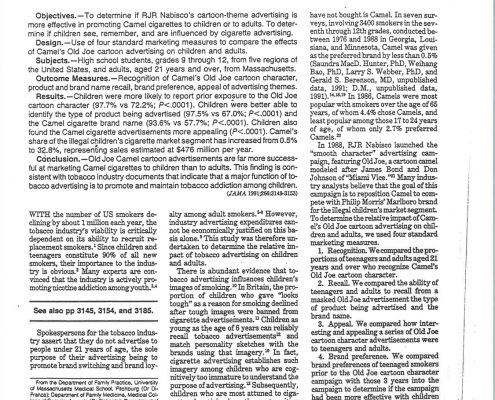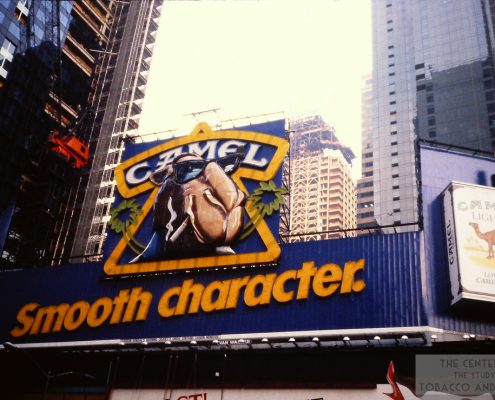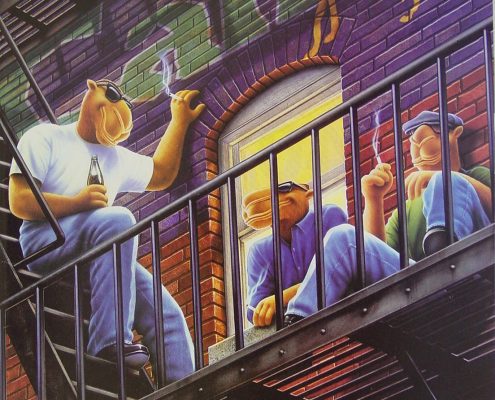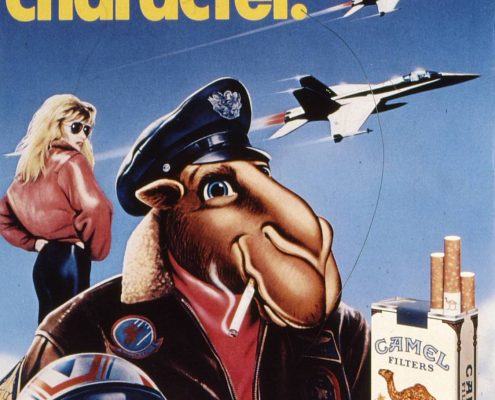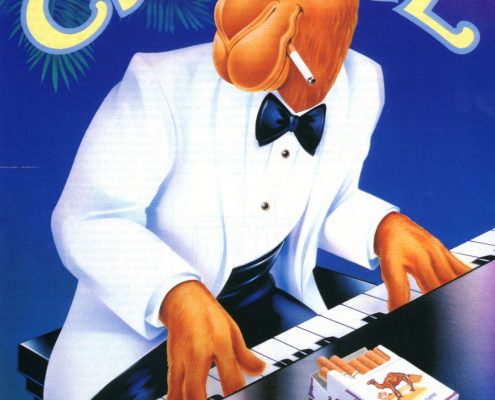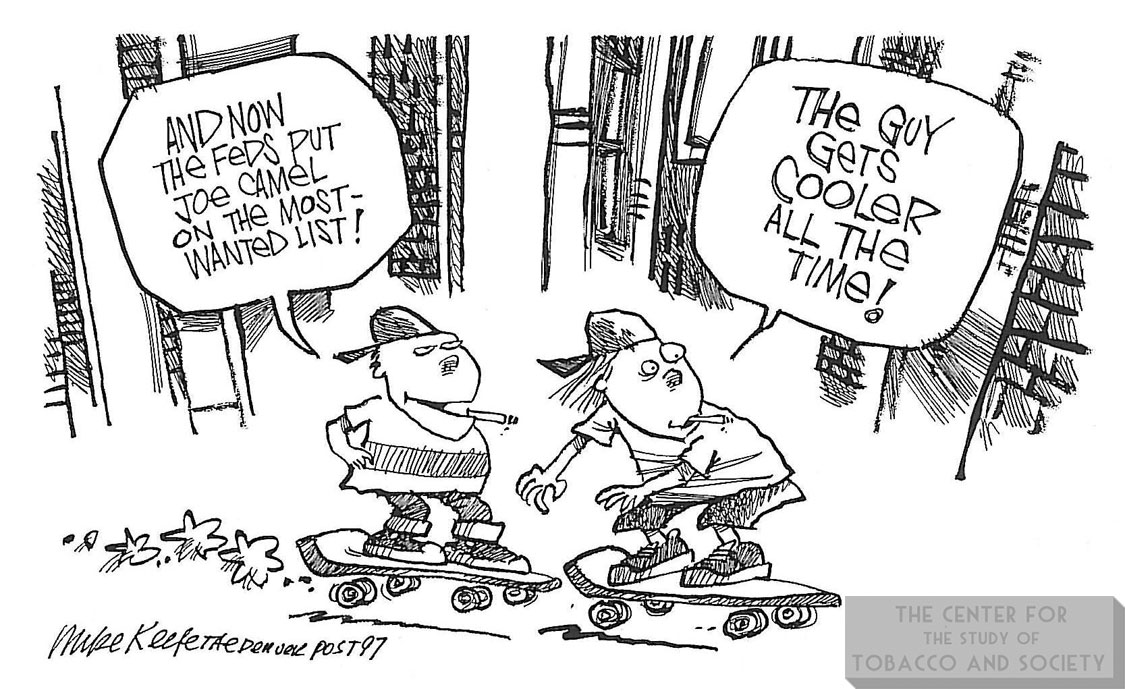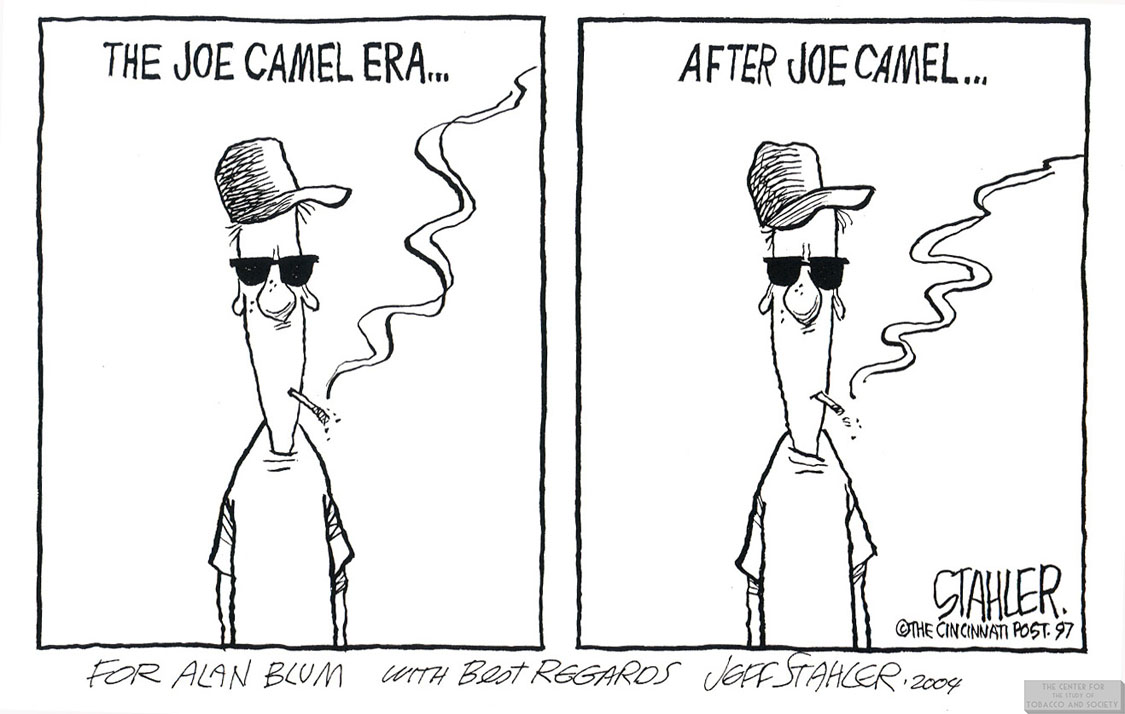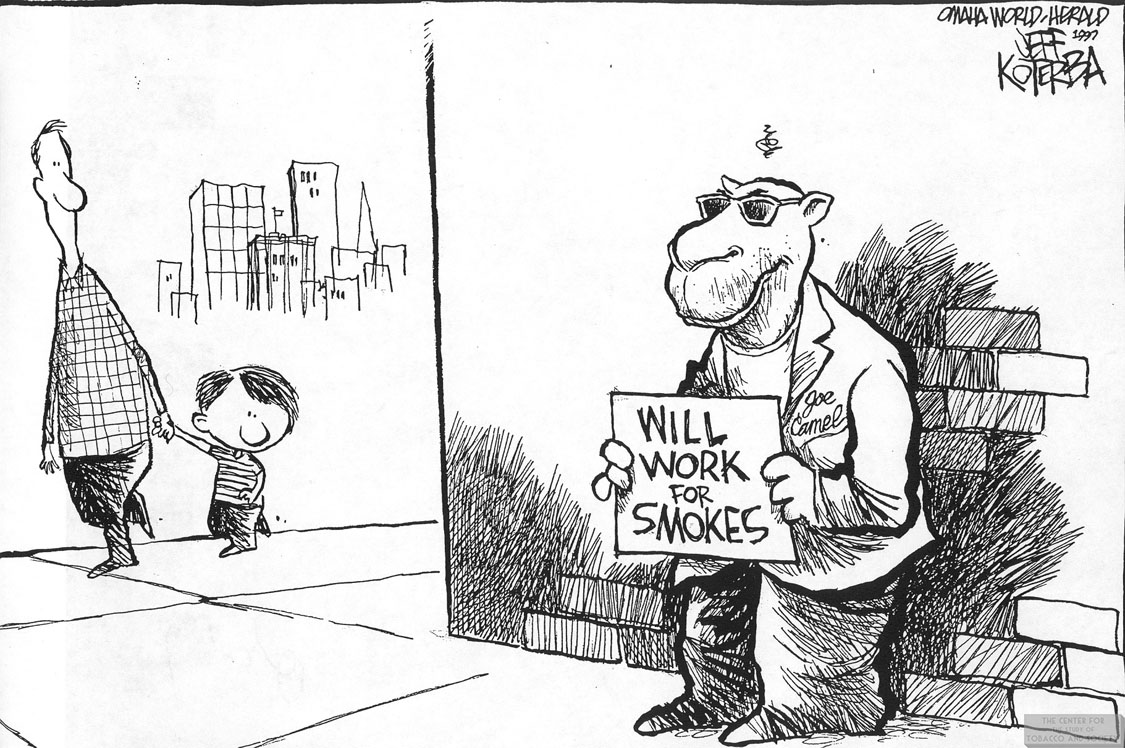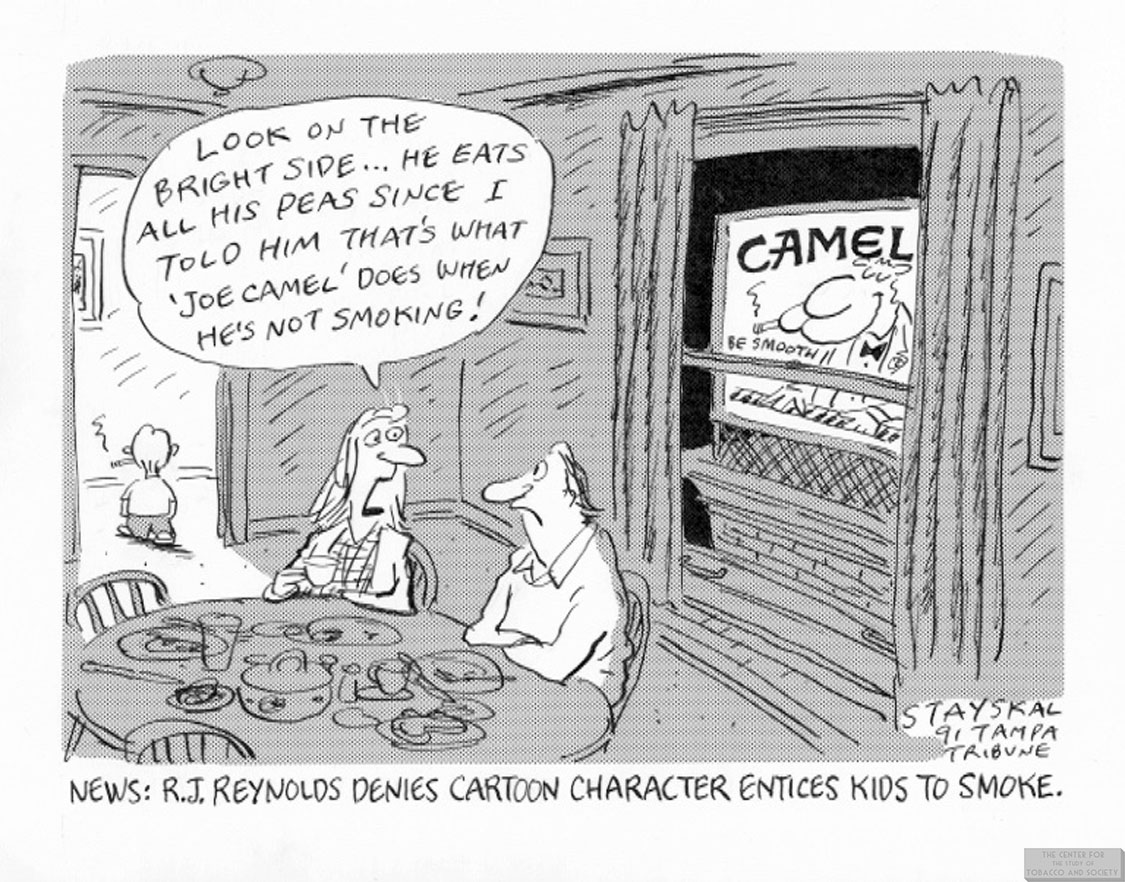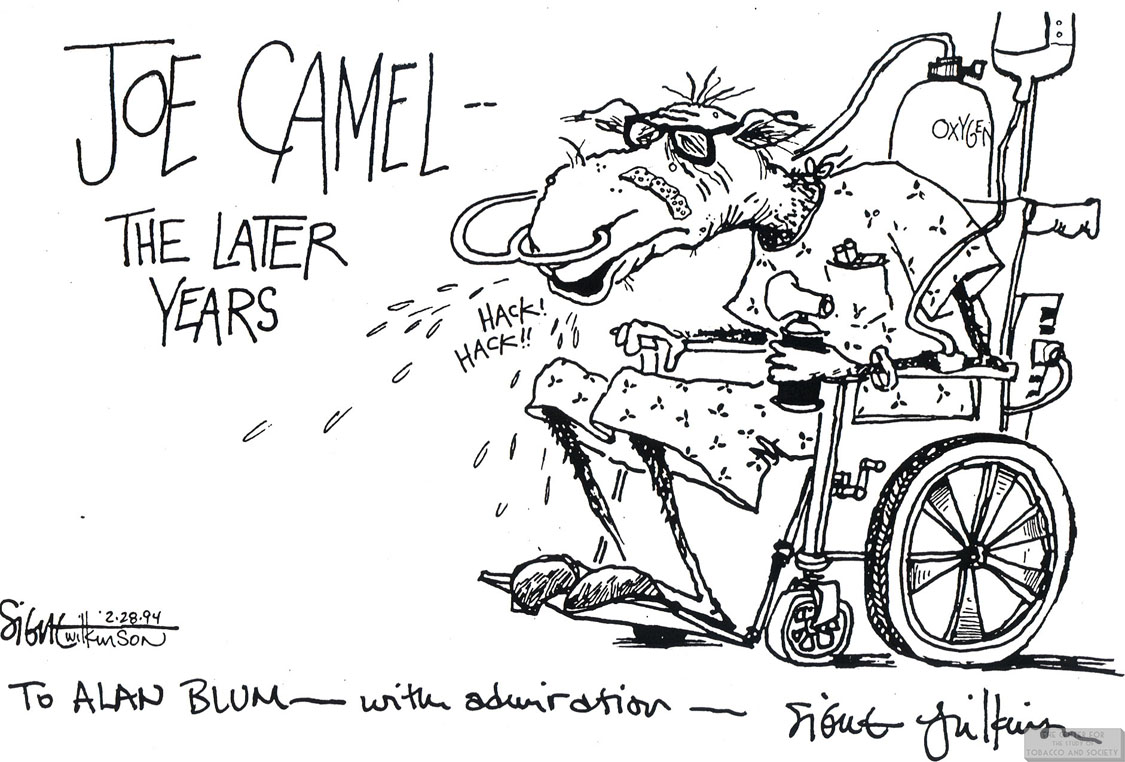Joe Camel
In 1988, R. J. Reynolds Tobacco Company introduced a cartoon character, Joe Camel, to invigorate sagging U.S. sales of its flagship brand. By 1991, the Journal of the American Medical Association had published a study revealing that more children could recognize Joe Camel than could identify Mickey Mouse or Fred Flintstone. Until 1997, R. J. Reynolds resisted all calls to end the Joe Camel campaign. Tobacco companies have always asserted that they have never targeted teenagers. Yet in the U.S., 60 percent of adults who smoke begin by age 16, and their favorite brand by far is the most heavily promoted cigarette: Marlboro.
Full Articles
“‘Ad Age’ was late to denounce Joe Camel”
Letter to the editor written by Alan Blum, MD
Advertising Age, page 42
April 11, 2005
“Brand Logo Recognition by Children Aged 3 to 6 Years: Mickey Mouse and Old Joe the Camel”
Journal article by Paul M. Fischer, MD; Meyer P. Schwartz, MD; John W. Richards, Jr., MD; Adam O. Goldstein, MD; and Tina H. Rojas
Journal of the American Medical Association, vol. 266, no. 22, pages 3145-3148
December 11, 1991
“RJR Nabisco’s Cartoon Camel Promotes Camel Cigarettes to Children”
Journal article by Joseph R. DiFranza, MD; John W. Richards, Jr., MD; Paul M. Paulman, MD; Nancy Wolf-Gillespie, MA; Christopher Fletcher, MD; Robert D. Jaffe, MD; David Murray, PhD
Journal of the American Medical Association, vol. 266, no. 22, pages 3149-3153
December 11, 1991
“He’s cool, all-right.”
Bruce Plante
The Chattanooga Times Free Press
February 26, 1994
“After much public criticism, the RJ Reynolds Tobacco Company finally relented and decided to abandon the Joe Camel advertising campaign, which had attempted to convince young people that smoking cigarettes was cool. Now Joe Camel was cool for an entirely different reason.”
— Bruce Plante
“And now the feds put Joe Camel on the most-wanted list!”
“The guy gets cooler all the time!”
Mike Keefe
The Denver Post
1997
“While the federal government can step in to issue health warnings and advertising guidelines for the tobacco industry, it cannot dictate fads. So, unfortunately, smoking is on the rise among American youth.”
— Mike Keefe
“The Joe Camel era… After Joe Camel…”
Jeff Stahler, The Cincinnati Post
Newsweek
December 29, 1997
“Now if we could only cut back on the second-hand smoke and mirrors from Congress.”
— Jeff Stahler
“Will work for smokes”
Jeff Koterba
The Omaha World-Herald
1997
“Look on the bright side…He eats all his peas since I told him that’s what Joe Camel does when he’s not smoking!”
Wayne Stayskal (1931-2018)
The Tampa Tribune
1991
“Joe Camel–The later years”
Signe Wilkinson
The Philadelphia Daily News
February 28, 1994
“This cartoon shows not only that I’ve been in this racket a long time, but also that things can actually change. When I go to schools now to talk about my cartoons, it’s hard to show this one because kids don’t know who Joe Camel is any more.”
— Signe Wilkinson

